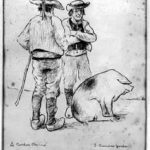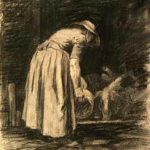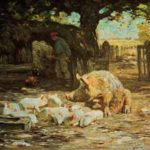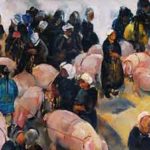an exhibition inspired by the pigs of Brittany
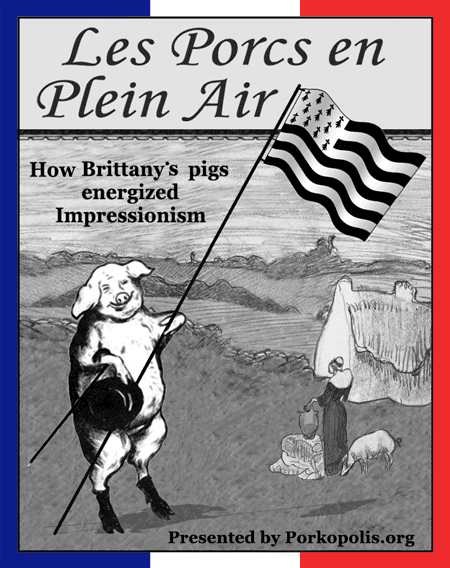
Artists & Thumbnails of the Plen Air Pigs
like the ray of sunlight in a child’s drawing
running straight to a pig’s ear,
tethering us all to our star.from “Unrelenting Flood” by William Matthews (1942-1997)
Pigs in the Open Air
How Brittany’s pigs energized Impressionism
This is a retrospective collection of art works by Impressionists and other artists. Each has considered the pig as a righteous subject for portraiture in the context of its natural rural setting. Also included are subsequent artists and artistic traditions that developed along with or after Impressionism and further honored the pig in paint.
As you review this collection there is no road map or precise plan. Peruse the pig paintings and encircle yourself in a plenitude of painted pork. Compare and contrast, make assumptions. This is a collection full of possibilities for fun and scholarship.
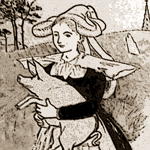 One of my own curiosities… is the girl standing in Henry Moret’s Jeunes Bretonnes dans la lande also the grown woman in Charles Lhermitte’s Bretagne, femme gardant des cochons #1?
One of my own curiosities… is the girl standing in Henry Moret’s Jeunes Bretonnes dans la lande also the grown woman in Charles Lhermitte’s Bretagne, femme gardant des cochons #1?
As one investigates the Impressionists, we can certainly consider, “why pigs?” Choosing to paint or draw a pig has never been a casual affair. It is a challenging animal of loops and swerves, folds, paps and curlicues. Pigs project an overtly nonchalant and inattentive demeanor. Yet, this belies their potential for a quick fuss or fury. Depicting in paint the many and varied transformations of the sea might seem less difficult.
And yet, as plein air painting in the 19th Century progressed and more artists moved out of the cities and into countryside, there seems to have been a natural attraction, almost a fascination, of Impressionists for pigs. These early Impressionists, enjoying their release from classrooms and studios, were forging about themselves for subject matter in rural Brittany. A similarly foraging pig – an animal ubiquitous to the region – likely seem a worthy subject.
And did the salon students think back to their early training when paints were stored in pigs’ bladders with a wooden stopper? How many pigs’ bladders had they squeezed paint from during their student years. And with how many pig bristle brushes had they plied that paint across canvasses. The material animal had been in their hands already for years. Why not put the pig itself into their painted works.
Also, the average farm pig in Brittany was not a wide ranging rooter. We can be sure they lackadaisically stood still for portraiture. And often, these pigs had an attendant person along to keep an eye on them. This was the simple recipe for a classic “rural scene” so sought after by painters to paint because buyers in the cities were craving scenes of the authentic French countryside and working people.
It is the assertion of this retrospective collection that the first Impressionists established a pig painting tradition that has since been taken up and championed by many later Impressionists and post-impressionists, as well as Cloisonnists, Cubists, Fauvists, Avant-gardes, Japonists, Synthetists and many more artistic practitioners.
Each painter in this collection has delineated their personal version of the pig and posed this challenge: do as well or better to this most artistically demanding creature. And remember, with honor, that the pig gave up so many bristles and 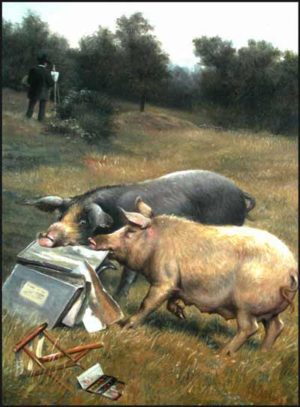 bladders for the betterment of our art.
bladders for the betterment of our art.
Art is but an reflection of the various ways the needs and the judgments of people develop. We all go our own way, with our own learned and assumed opinions. I hope everyone finds something interesting here, some beauty or some interest to pursue. And may you be sent off along the pig paths of this world with a silk purse of useful contemplations about the pig.
Thank you all for visiting, and I hope you enjoy your time here,
D.E. Schultz,
Porkopolis Editor, Curator and Swineherd
Artists & Plen air Pigs
Acknowledgements
The works on display here came to my attention from an incongruous collection of sources. My efforts to discover, uncover and detail these works were only possible with the support of my family and friends.
I also wish to acknowledge the generosity of a few anonymous individuals who are regular patrons of Porkopolis.org Art Museum and Library. Aid and advice was also given by an unprecedented cadre of perceptive pig-prizing private art collectors who frequent the Porkopolis.org Art Museum. For although my own judgement was the final determining factor, these patrons and collectors form the basis for the sources and suggestions used to root out and compile this retrospective.
I must also acknowledge the many works on loan from venerated museums worldwide. These institutions were willing to loan out certain works in their possession, though again expressing their disenchantment with the Porkopolis.org Art Museum’s mission – the promotion of pig-themed art.
D.E. Schultz,
Porkopolis Editor, Curator and Swineherd

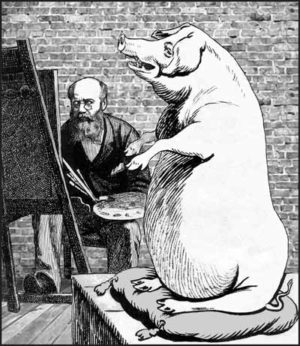
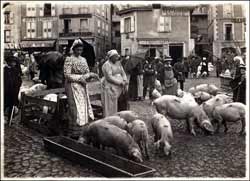
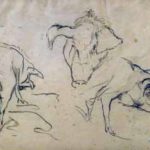
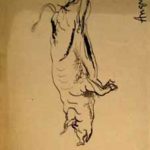
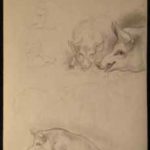
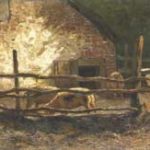
![Barillot, Léon - Truie Normande [Normandy sow]](https://www.porkopolis.org/pigcity7/wp-content/uploads/2016/06/barillot-leo1a-150x150.jpg)
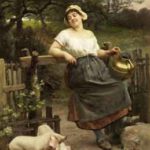
![Beauverie, Charles - La foire aux cochons à Poncins [The pig fair at Poncins]](https://www.porkopolis.org/pigcity7/wp-content/uploads/2016/06/beauverie-chas1a-150x150.jpg)
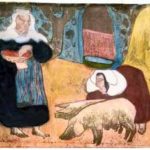
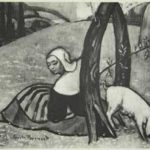
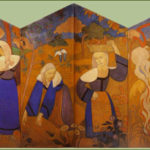
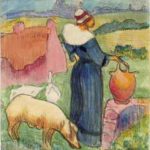
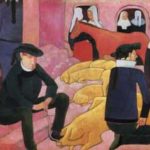
![Bernard, Emile - La lande à Pont Aven [Open lands in Pont Aven]](https://www.porkopolis.org/pigcity7/wp-content/uploads/2016/06/bernard6a-150x150.jpg)
![Berne-Bellecour, Etienne Prosper - La gardienne de cochon [The pig keeper]](https://www.porkopolis.org/pigcity7/wp-content/uploads/2016/06/bellecour-1a-150x150.jpg)
![Blanche, Étienne - Jour de marché à Pont-Croix [Market day in Pont-Croix]](https://www.porkopolis.org/pigcity7/wp-content/uploads/2016/06/blanche-et1a-150x150.jpg)
![Blant, Julien Le - Le marché aux cochons [The pig market]](https://www.porkopolis.org/pigcity7/wp-content/uploads/2016/06/blant-jul1a-150x150.jpg)
![Bonnard, Pierre - le Cochon [The Pig]](https://www.porkopolis.org/pigcity7/wp-content/uploads/2016/06/bonnard1a-150x150.gif)
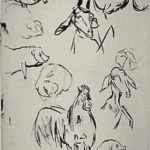
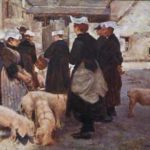
![Bourgonnier, Claude Charles - Tueur de cochons [The pig killer]](https://www.porkopolis.org/pigcity7/wp-content/uploads/2016/06/bourgonnier-cla1a-150x150.jpg)
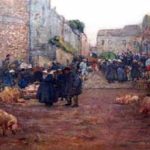
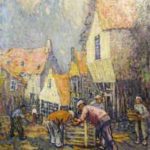
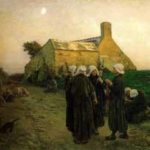
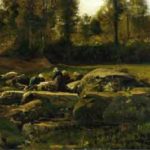
![Cartwright, Charles - Noce bretonne au Faouët [Breton wedding in Faouët]](https://www.porkopolis.org/pigcity7/wp-content/uploads/2016/06/cartwright-chas1a-150x150.jpg)
![Claus, Emile - Le verger au printemps [The orchard in Spring]](https://www.porkopolis.org/pigcity7/wp-content/uploads/2016/06/claus1a-150x150.jpg)
![Corot, Jean-Baptiste-Camille - Gardeuses de Porce [The Swineherders]](https://www.porkopolis.org/pigcity7/wp-content/uploads/2016/06/corot1a-150x150.jpg)
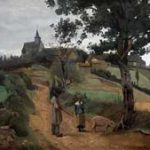
![Cottet, Charles - Vente des porcs [Sale of pigs]](https://www.porkopolis.org/pigcity7/wp-content/uploads/2016/06/cottet1a-150x150.jpg)
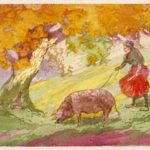
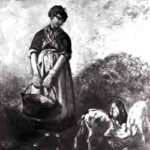
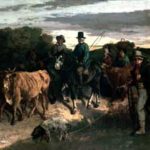
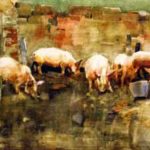
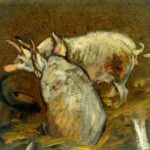
![Crémière, Léon - Cochon couché avec un homme à côté [Pig asleep with a man beside it]](https://www.porkopolis.org/pigcity7/wp-content/uploads/2016/06/cremiere-1a-150x150.jpg)
![Crémière, Léon - Cochon couché de face [Pig lying down, face forward]](https://www.porkopolis.org/pigcity7/wp-content/uploads/2016/06/cremiere-2a-150x150.jpg)
![Crémière, Léon - Cochon couché profil gauche [Pig lying down, left profile]](https://www.porkopolis.org/pigcity7/wp-content/uploads/2016/06/cremiere-3a-150x150.jpg)
![DeLavallée, Henri - Bretonne au cochon or Au bord de la rivière [Breton pig or Along the River]](https://www.porkopolis.org/pigcity7/wp-content/uploads/2016/06/delavallee-1a-150x150.jpg)
![Dezaunay, Emile Alfred - Jeunes Bretonnes et leurs cochons en laisse près de la rivière [Young Breton and their pigs on a leash near the river]](https://www.porkopolis.org/pigcity7/wp-content/uploads/2016/06/dezaunay-emi1a-150x150.jpg)
![Dresel, Frédéric - La foire aux cochons [The pig fair]](https://www.porkopolis.org/pigcity7/wp-content/uploads/2016/06/dresel-fred1a-150x150.jpg)
![Enault, Francois - Foire de Lessay [The fair at Lessay]](https://www.porkopolis.org/pigcity7/wp-content/uploads/2016/06/enault-fran1a-150x150.jpg)
![Falkner, Anne Louise - Paysans Bretons et les porcs [Breton Farmers and pigs]](https://www.porkopolis.org/pigcity7/wp-content/uploads/2016/06/falkner-anne1a-150x150.jpg)
![Floch, Lionel - Bretonnes au marché au cochons [Breton pig market]](https://www.porkopolis.org/pigcity7/wp-content/uploads/2016/06/floch-lion1a-150x150.jpg)
![Floch, Lionel - Le marché aux cochons à Plonéour-Lanvern [The pig market in Plonéour Lanvern]](https://www.porkopolis.org/pigcity7/wp-content/uploads/2016/06/floch-lion2a-150x150.jpg)
![Floch, Lionel - Marché Breton Aux Cochons [Breton pig market]](https://www.porkopolis.org/pigcity7/wp-content/uploads/2016/06/floch-lion3a-150x150.jpg)
![Floch, Lionel - Bretonnes au marché [Breton market]](https://www.porkopolis.org/pigcity7/wp-content/uploads/2016/06/floch-lion4a-150x150.jpg)
![Fortuney, Louis - Bretagne, la foire aux cochons [Brittany, pig fair]](https://www.porkopolis.org/pigcity7/wp-content/uploads/2016/06/fortuney-lou1a-150x150.jpg)
![Fraipont, Gustave - Scène de marché au Folgoët, Bretagne [Market scene at Le Folgoet, Brittany]](https://www.porkopolis.org/pigcity7/wp-content/uploads/2016/06/fraipont-gus1a-150x150.jpg)
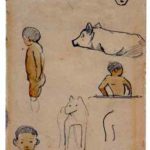
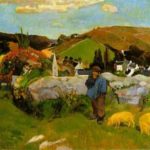
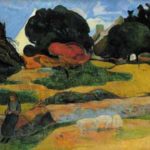
![Gauguin, Paul - La Barriere [The Gate]](https://www.porkopolis.org/pigcity7/wp-content/uploads/2016/06/gauguin3a-150x150.jpg)
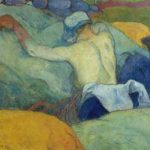
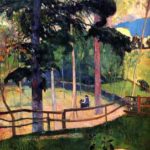
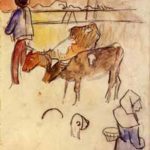
![Gillet, Numa François - La gardienne de cochons [The guardian of the pigs ]](https://www.porkopolis.org/pigcity7/wp-content/uploads/2016/06/gillet-numa1a-150x150.jpg)
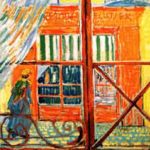
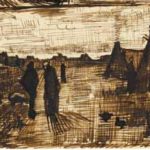
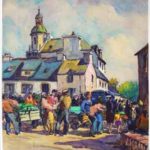
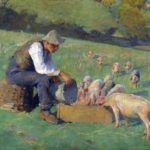
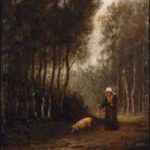
![Jean-Haffen, Yvonne - Foire au Folgoet [Fair at Folgoet]](https://www.porkopolis.org/pigcity7/wp-content/uploads/2016/06/jean-haffen-1a-150x150.jpg)
![Jean-Haffen, Yvonne - Cour de ferme au pays de Caux [Farmyard at Caux]](https://www.porkopolis.org/pigcity7/wp-content/uploads/2016/06/jean-haffen-2a-150x150.jpg)
![Jean-Haffen, Yvonne - Marché aux cochons [Pig market]](https://www.porkopolis.org/pigcity7/wp-content/uploads/2016/06/jean-haffen-5a-150x150.jpg)
![Jean-Haffen, Yvonne - Tout de Coëtquen [Tower of Coëtquen]](https://www.porkopolis.org/pigcity7/wp-content/uploads/2016/06/jean-haffen-6a-150x150.jpg)
![Jossot, Gustave-Henri - Retour du marche [Returning from the market]](https://www.porkopolis.org/pigcity7/wp-content/uploads/2016/06/jossot-hen1a-150x150.jpg)
![Jossot, Gustave-Henri - Breton et son cochon [A Breton and his pig]](https://www.porkopolis.org/pigcity7/wp-content/uploads/2016/06/jossot-hen2a-150x150.jpg)
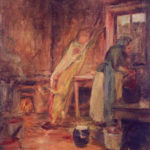
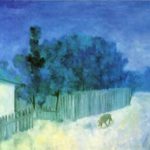
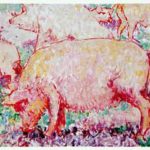
![Larionov, Mikhail - Le cochon bleu [Blue Pig]](https://www.porkopolis.org/pigcity7/wp-content/uploads/2016/06/larionov5a-150x150.jpg)
![Leblanc, Richard - Foire de Lessay [Fair of Lessay]](https://www.porkopolis.org/pigcity7/wp-content/uploads/2016/06/leblanc-rich1a-150x150.jpg)
![Levrel, René - Marché aux cochons [Pig market]](https://www.porkopolis.org/pigcity7/wp-content/uploads/2016/06/levrel-ren1a-150x150.jpg)
![Lhermitte, Charles Augustin - Bretagne, femme gardant des cochons #1 [Brittany, woman keeping pigs #1]](https://www.porkopolis.org/pigcity7/wp-content/uploads/2016/06/lhermitte-c1a-150x150.jpg)
![Lhermitte, Charles Augustin - Bretagne, femme gardant des cochons #2 [Brittany, woman keeping pigs #2]](https://www.porkopolis.org/pigcity7/wp-content/uploads/2016/06/lhermitte-c2a-150x150.jpg)
![Lhermitte, Charles Augustin - Porcs dans une cour de ferme [Pigs in a farm yard]](https://www.porkopolis.org/pigcity7/wp-content/uploads/2016/06/lhermitte-c3a-150x150.jpg)
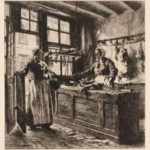
![Lhermitte, Leon Augustin - Celui qui fait les frais de la fête [The one who paid the price of the festival]](https://www.porkopolis.org/pigcity7/wp-content/uploads/2016/06/lhermitte-l3a-150x150.jpg)
![Mars, Ethel - Cochon [Pig]](https://www.porkopolis.org/pigcity7/wp-content/uploads/2016/06/mars-ethel1a-150x150.jpg)
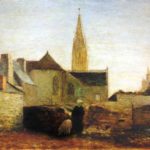
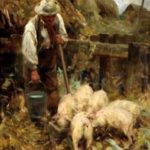
![Méheut, Mathurin - La mort du cochon [The death of the pig]](https://www.porkopolis.org/pigcity7/wp-content/uploads/2016/06/meheut-mat1a-150x150.jpg)
![Méheut, Mathurin - Trois Bretons et la truie [Three Britons and a sow]](https://www.porkopolis.org/pigcity7/wp-content/uploads/2016/06/meheut-mat6a-150x150.jpg)
![Menpes, Mortimer Luddington - Marché aux cochons en Bretagne [Pig marget in Brittany]](https://www.porkopolis.org/pigcity7/wp-content/uploads/2016/06/menpes-mort1a-150x150.jpg)
![Montezin, Pierre-Eugene - Les porcs [The Pigs]](https://www.porkopolis.org/pigcity7/wp-content/uploads/2016/06/montezin-pierre1a-150x150.jpg)
![Montezin, Pierre-Eugene - Cochon ou basse-cour [Pig or poultry yard]](https://www.porkopolis.org/pigcity7/wp-content/uploads/2016/06/montezin-pierre2a-150x150.jpg)
![Montezin, Pierre-Eugene - Cour de Ferme [The Farmyard]](https://www.porkopolis.org/pigcity7/wp-content/uploads/2016/06/montezin-pierre3a-150x150.jpg)
![Moreau, Gustave - Etude de porc couché [Study of a pig lying down]](https://www.porkopolis.org/pigcity7/wp-content/uploads/2016/06/moreau-gust2a-150x150.jpg)
![Moreau, Gustave - Porc couché [Pig lying down]](https://www.porkopolis.org/pigcity7/wp-content/uploads/2016/06/moreau-gust1a-150x150.jpg)
![Moret, Henry - Jeunes Bretonnes dans la lande [Young Bretons in the moor]](https://www.porkopolis.org/pigcity7/wp-content/uploads/2016/06/moret1a-150x150.jpg)
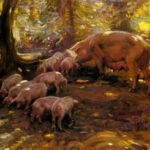
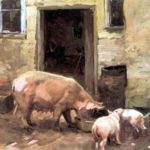
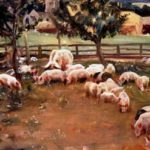
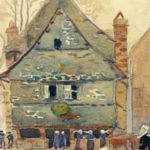
![Paulet, Marguerite - Porcs [Pigs]](https://www.porkopolis.org/pigcity7/wp-content/uploads/2016/06/paulet-mar2a-150x150.jpg)
![Paulet, Marguerite - Truie allaitant, Quimperlé [Lactating sow]](https://www.porkopolis.org/pigcity7/wp-content/uploads/2016/06/paulet-mar3a-150x150.jpg)
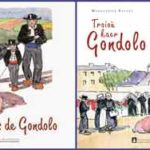
![Paulet, Marguerite - Croquis au marché Quimperlé, hommes et cochons [Sketch of Quimperlé market, men and pigs]](https://www.porkopolis.org/pigcity7/wp-content/uploads/2016/06/paulet-mar5a-150x150.jpg)
![Pégot-Ogier, Jean-Bertrand - Joueur de binioù [The bagpipe player]](https://www.porkopolis.org/pigcity7/wp-content/uploads/2016/06/pegot-ogier1a-150x150.jpg)
![Pégot-Ogier, Jean-Bertrand - La préparation du cochon [The preparation of the pig]](https://www.porkopolis.org/pigcity7/wp-content/uploads/2016/06/pegot-ogier2a-150x150.jpg)
![Petit, Alfred Le - Les cochons à l’étable [Pigs in a barn]](https://www.porkopolis.org/pigcity7/wp-content/uploads/2016/06/lepetit1a-150x150.jpg)
![Petit, Alfred Le - Le marché aux cochons #6 [The pig market #6]](https://www.porkopolis.org/pigcity7/wp-content/uploads/2016/06/lepetit2a-150x150.jpg)
![Petit, Alfred Le - La toilette funèbre #2 [The toilette for the funeral]](https://www.porkopolis.org/pigcity7/wp-content/uploads/2016/06/lepetit3a-150x150.jpg)
![Petit, Alfred Le - Le dépecage #2 [Butchering #2]](https://www.porkopolis.org/pigcity7/wp-content/uploads/2016/06/lepetit4a-150x150.jpg)
![Petit, Alfred Le - Un charcutier [The pork butcher]](https://www.porkopolis.org/pigcity7/wp-content/uploads/2016/06/lepetit5a-150x150.jpg)
![Pincas, Moreno - Bretagne, marché aux cochons [Brittany pig market]](https://www.porkopolis.org/pigcity7/wp-content/uploads/2016/06/pincas-mor1a-150x150.jpg)
![Pissarro, Camille - Le marché aux cochons, foire de la Saint-Martin à Pontoise [Pig market, Saint Martin’s Day fair in Pontoise]](https://www.porkopolis.org/pigcity7/wp-content/uploads/2016/06/pissarro-cam1a-150x150.jpg)
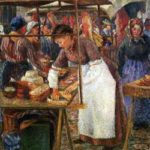
![Pissarro, Camille - Maison de paysans [Peasants house]](https://www.porkopolis.org/pigcity7/wp-content/uploads/2016/06/pissarro-cam3a-150x150.jpg)
![Pissarro, Ludovic Rodo - Un des bovins et des porcs marché Bretonne près de Redon [Bretonne cattle and pig market near Redon]](https://www.porkopolis.org/pigcity7/wp-content/uploads/2016/06/pissarro-robo1a-150x150.jpg)
![Pissarro, Paul-Émile - Femme garde les porcs [A woman guarding pigs]](https://www.porkopolis.org/pigcity7/wp-content/uploads/2016/06/pissarro-p-e1a-150x150.jpg)
![Popelin, Gustave - Marchands de porcs #1 [Pork merchants #1]](https://www.porkopolis.org/pigcity7/wp-content/uploads/2016/06/popelin-gus1a-150x150.jpg)
![Popelin, Gustave - Marchands de porcs #2 [Pork merchants #2]](https://www.porkopolis.org/pigcity7/wp-content/uploads/2016/06/popelin-gus2a-150x150.jpg)
![Poupelet, Jane - Truie couchée [reclining sow]](https://www.porkopolis.org/pigcity7/wp-content/uploads/2016/06/poupelet-jane1a-150x150.jpg)
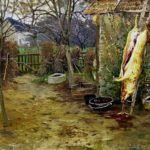
![Renault, Emile Auguste - Famille de Bigoudens au cochon [A Bigoudens family pig]](https://www.porkopolis.org/pigcity7/wp-content/uploads/2016/06/malo-renault1a-150x150.jpg)
![Renault, Emile Auguste - Le Bigouden au cochon [A Bigouden pig]](https://www.porkopolis.org/pigcity7/wp-content/uploads/2016/06/malo-renault2a-150x150.jpg)
![Renault, Emile Auguste - Les petits dormeurs [The small sleepers]](https://www.porkopolis.org/pigcity7/wp-content/uploads/2016/06/malo-renault3a-150x150.jpg)
![Renault, Emile Auguste - Rue de Quimper [A street in Quimper]](https://www.porkopolis.org/pigcity7/wp-content/uploads/2016/06/malo-renault4a-150x150.jpg)
![Richard, Edouard - Jour de marché à Quimperlé [Market day in Quimperlé]](https://www.porkopolis.org/pigcity7/wp-content/uploads/2016/06/richard-edo1a-150x150.jpg)
![Roussin, Victor-Marie - Les noces de Corentin Le Guerveur et d’Anne-Marie Kerinvel [The Marriage of The Guerveur Corentin and Anne-Marie Kerinvel]](https://www.porkopolis.org/pigcity7/wp-content/uploads/2016/06/roussin-vict1a-150x150.jpg)
![Roux-Champion, Victor - Gardien de porc [Pig keeper]](https://www.porkopolis.org/pigcity7/wp-content/uploads/2016/06/roux-champ-vic1a-150x150.jpg)
![Roy, Louis - Paysan gardant ses cochons [Peasant guarding pigs]](https://www.porkopolis.org/pigcity7/wp-content/uploads/2016/06/roy-lou1a-150x150.jpg)
![Ruty, Paul - Jour de marché aux cochons dans la région de l’Aven [Market day for pigs in the region of the Aven]](https://www.porkopolis.org/pigcity7/wp-content/uploads/2016/06/ruty-paul1a-150x150.jpg)
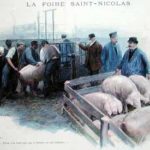
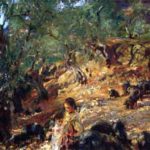
![Saunier, Noel - Le gardien de cochon [The pig keeper]](https://www.porkopolis.org/pigcity7/wp-content/uploads/2016/06/saunier-no1a-150x150.jpg)
![Serusier, Paul - Les porcelets [Piglets]](https://www.porkopolis.org/pigcity7/wp-content/uploads/2016/06/serusier1a-150x150.jpg)
![Serusier, Paul - Bretonne donnant à manger aux cochons [Brenton feeding pigs in a manger]](https://www.porkopolis.org/pigcity7/wp-content/uploads/2016/06/serusier2a-150x150.jpg)
![Serusier, Paul - Danse bretonne [Breton dance]](https://www.porkopolis.org/pigcity7/wp-content/uploads/2016/06/serusier3a-150x75.jpg)
![Servant, Michel Adrien - Paysans au marchè de Valognes [Peasants at the market of Valognes]](https://www.porkopolis.org/pigcity7/wp-content/uploads/2016/06/servant1a-150x150.jpg)
![Servant, Michel Adrien - Marche aux cochons Valognes [Pig market in Valognes]](https://www.porkopolis.org/pigcity7/wp-content/uploads/2016/06/servant2a-150x150.jpg)
![Servant, Michel Adrien - Les paysans au marché aux cochons [Farmers pig market]](https://www.porkopolis.org/pigcity7/wp-content/uploads/2016/06/servant3a-150x150.jpg)
![Servant, Michel Adrien - Une Promenade À La Foire Aux Cochons [A walk through the pig fair]](https://www.porkopolis.org/pigcity7/wp-content/uploads/2016/06/servant4a-150x150.jpg)
![Servant, Michel Adrien - Menu de Banquet [Banquet menu]](https://www.porkopolis.org/pigcity7/wp-content/uploads/2016/06/servant5a-150x150.jpg)
![Sevaistre, Pierre - On tue le porc à la ferme [Farm pig goes to slaughter]](https://www.porkopolis.org/pigcity7/wp-content/uploads/2016/06/sevaistre-pier1a-150x150.jpg)
![Simon, Émile - Scène de marché à Pont-Croix [Market scene in Pont Croix]](https://www.porkopolis.org/pigcity7/wp-content/uploads/2016/06/simon-em1a-150x150.jpg)
![Simon, Émile - Scène de marché à Pont-Croix [Market scene in Pont Croix]](https://www.porkopolis.org/pigcity7/wp-content/uploads/2016/06/simon-em2a-150x150.jpg)
![Simon, Lucien - La mort du cochon [The death of the pig]](https://www.porkopolis.org/pigcity7/wp-content/uploads/2016/06/simon-l1a-150x150.jpg)
![Simon, Lucien - Le Menhir de Plozevet [The Menhir of Plozevet]](https://www.porkopolis.org/pigcity7/wp-content/uploads/2016/06/simon-l2a-150x150.jpg)
![Sparks, Arthur - Le repas des cochons [The pig’s meal]](https://www.porkopolis.org/pigcity7/wp-content/uploads/2016/06/sparks1a-150x150.jpg)
![Stany-Gauthier, Joseph - Marché aux cochon en Bretagne [Pig Market in Brittany]](https://www.porkopolis.org/pigcity7/wp-content/uploads/2016/06/stany-gauthier1a-150x150.jpg)
![Toulouse-Lautrec, Henri de - Le Cochon [The Pig]](https://www.porkopolis.org/pigcity7/wp-content/uploads/2016/06/lautrec1a-150x150.jpg)
![Vayson, Paul - Cochons à la ferme [Pigs at a farm]](https://www.porkopolis.org/pigcity7/wp-content/uploads/2016/06/vayson-paul1a-150x150.jpg)
